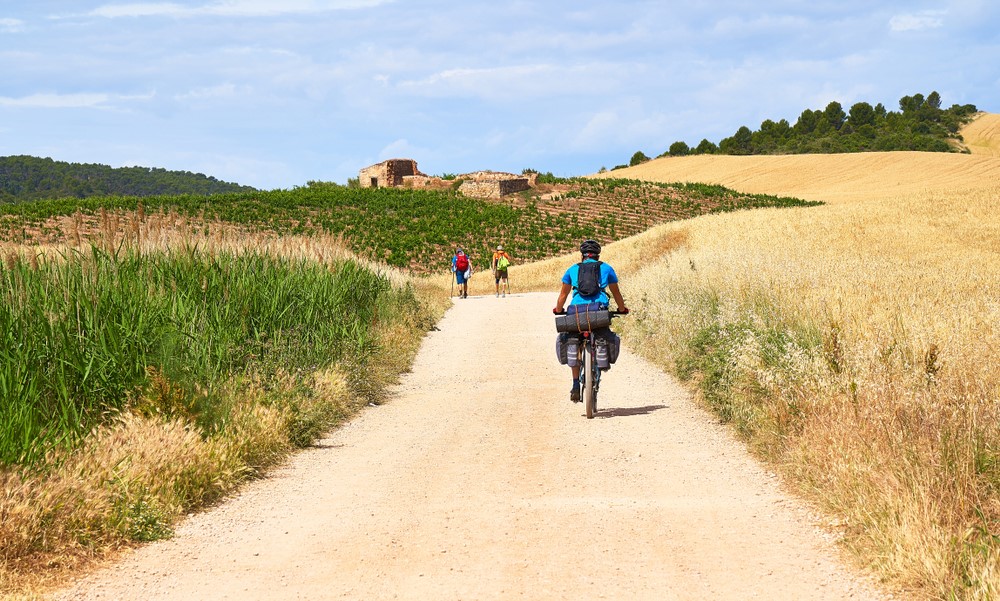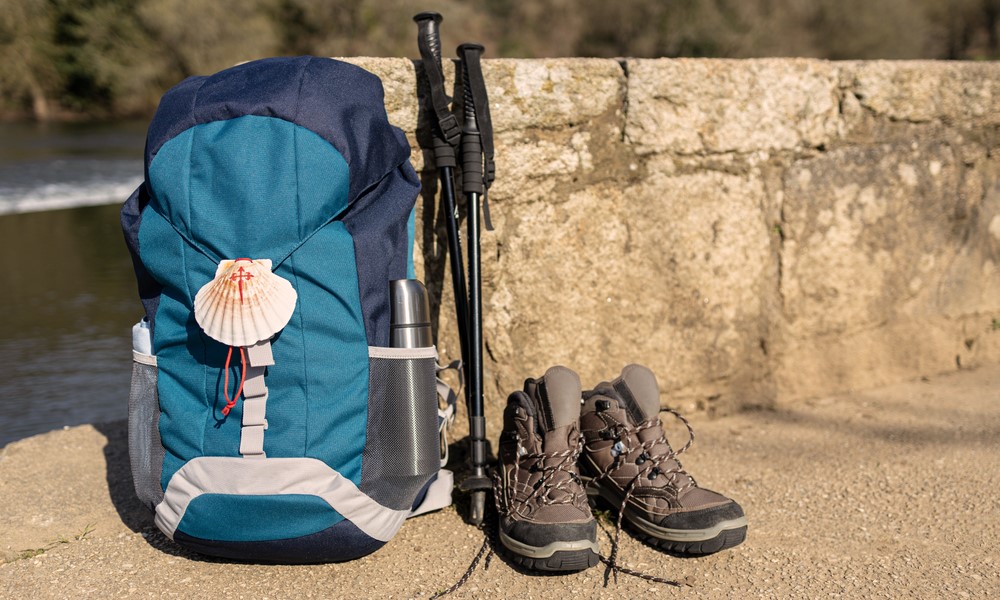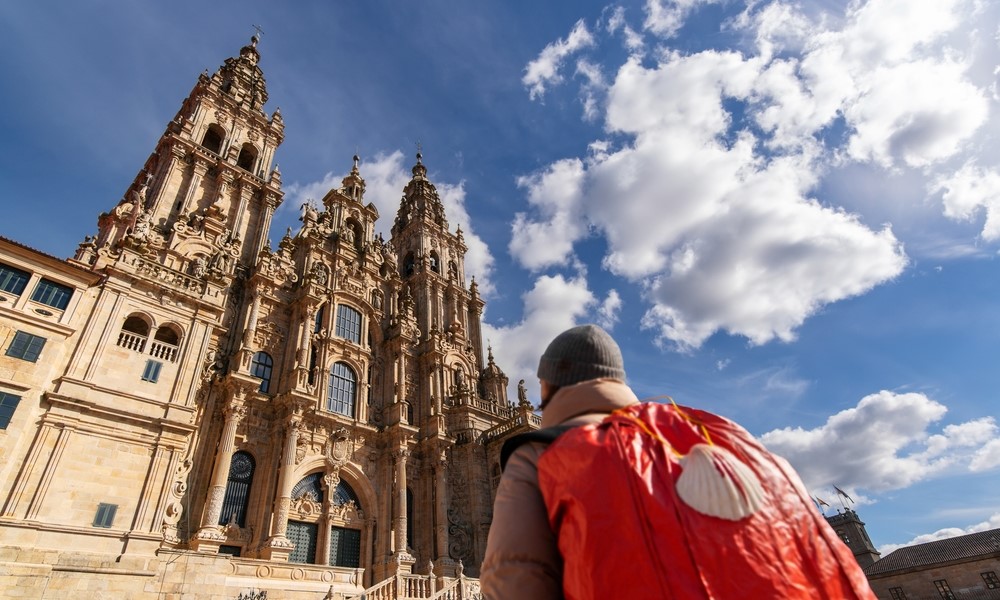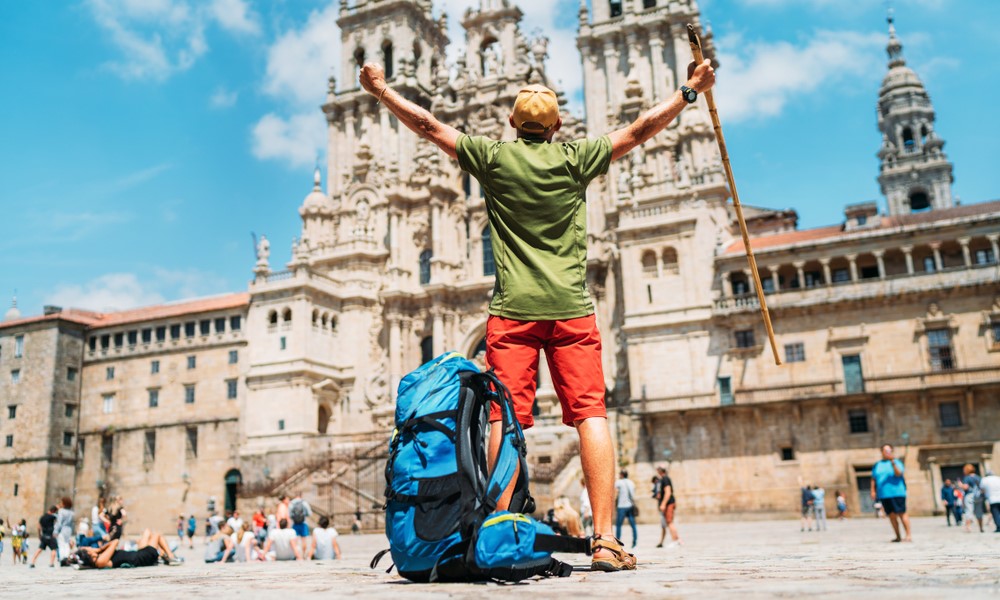Spain is not only an idle beach vacation. The country will open from the unexpected side if you try to walk it on foot. For example, on one of the most famous pilgrimage routes in the world – the ancient path of St. Jacob, Kamino de Santiago (Spanish Camino de Santiago).
There are many official options for the way: dozens of foot paths from all over Spain, Portugal and France lead to the city of Santiago de Compostel, to the main temple of pilgrims-the cathedral of St. James. There, according to legend, his relics are stored.
We will tell you how to go one of the most picturesque roads – the Northern Way, Kamino del North (Spanish Camino del Norte).
Entrance rules
For a trip to Spain, Russian citizens need a Schengen visa. Submit an application to the Spanish consulate or a visa center from 6 months to 15 days before the trip, but the consideration period can be increased to 45 days. The size of the visa fee for tourists is 80 euros (approximately 6,500 rubles*).
How to get
From Russia to Spain, you can fly with transfers in Istanbul, Cairo or Abu Dhabi. The cost of tickets from Moscow starts from 27,600 rubles*.
Who goes the path of pilgrims

The path of St. James can be overcome on foot, on a bicycle or riding. Travelers are called pilgrims. But today it is no longer necessary to go there with religious goals. Many travelers go on the road to see Spain from an unusual angle, imbued with an authentic atmosphere in little -known places, enjoy landscapes and solitude. Often they call themselves Turigrinos (from Spanish Turismo – Tourism and Gringo – Foreigner).
Passport of the Pispler

The path has its own rituals and mandatory documents. Before the start, each pilgrim should receive at the office of pilgrimage associations or city church Credpensial – A peculiar passport of the Pispler. He makes it possible to spend the night in special hotels and shelters – Alberge. In credentials, stamps from the places of the night, churches or chapels along the road are put daily – evidence of staying on the path of Santiago.
And this is also a wonderful and unique memory of kilometers and experience.
Northern path

It begins in the city of Irun and runs along the coast of the Bay of the Bay and the Cantabrian Sea (Atlantic Ocean). You will pass 825 km in four regions – the country of Basque, Kantabria, Asturia and Galicia. It will take about 34 days all the way.
On the way, you will see hills covered with eucalyptus groves and coniferous forests, green fields, cliffs and cliffs that go right into the sea, bewitching panoramas of an endless ocean, cozy medieval towns and villages. And beaches, endless kilometers of beaches, sandy, rocky, popular city and secluded wild. The path passes along a different relief – from forest stony paths to lively asphalt highway. The north of Spain is a mountain-luminous area, so get ready to constantly recruit and drop heights.
Going from one land to another, you will notice that each has its own characteristics. Baskia – As if a separate country inside Spain, with its original language, traditions and national character. In any conversation with Basques, they feel how much they are proud of their history and culture.
Cantabria – These are pastoral paintings of wide pastures between hills and mountains, with neat village white houses and curious cows. This is a delicious home sheep cheese. And the smell of organic fertilizers with farms – be prepared for it on a hot sunny day.
Asturia – Apple land. Therefore, everything is in apples: gardens along roads, storage facilities on high supports, even horses. The main drink of this earth, of course, is apple cider. Look at one of the many authentic sidrevria, where you will be poured according to all the rules.
Galicia It is remembered by the fact that here the path turns inside the mainland, it becomes not so hilly, it is easier to go, and the speed of movement immediately increases.
How is the path of Santiago

All routes, including the North, are well marked by the symbol of the path of St. Jacob – a shell with rays extending from it. The sign can be applied with paint, lined with tiles or mosaics on buildings, stones and trees. There are also separate columns with signs. But it is worth paying attention – the rays of the shell in different places indicate in different directions, you can get confused and leave in the opposite direction. In addition, some unscrupulous owners of hotels draw false signs of the path so that travelers are turning to them for the night.
The best option is to download the map, track and application, which are quite a lot on the Internet, and regularly check with them.

The whole northern path is divided into stages. They are formed so that in a day the pilgrims reached a more or less large settlement, where there is a cafe and an overnight stay. About 20-30 km you need to go in a day.
You can adapt the stages for yourself, shortening and lengthening them. But to pass more than 40 km on such a relief can only be resilient and trained travelers.
To overcome long distances, leaving time to contemplate rich nature and rest on the beaches, pilgrims have traveled at 7-8 in the morning. In the summer, many wake up even earlier to go to most of the road to the heat.
Where and how to spend the night

Alberge – special hostels for the pilgrims of Santiago. You can spend the night in them only by presenting credentials. Municipal Alberge are free, for any donat or a fixed fee of 5 euros (425 rubles*). There is the most necessary: beds, a toilet, a small kitchen and a hot shower. Private costs a little more, but still cheaper than most hotels.
Alberge meet different: sports halls of schools with rows of metal bunk beds, cozy houses with 10 seats, modern hostels in several floors. Or authentic, impregnated with the history of the place. How do you need the opportunity to spend the night in the cell of the medieval operating monastery, where real nuns will be met with a cool lemon drink? You will find this in Gorodok Lado In Kantabria.
Most Alberg will need his sleeping bags. But some have real bedding, for example, in the town STURand this little nuance is a huge luxury for pilgrims.
All Alberge are marked on tracks, and on thematic sites you can read reviews about them.
The main advantages of the pilgrimage shelters are the price and the unique warm atmosphere of the community of Pilgrims. But there is a minus – after a difficult day, it is difficult to get enough sleep in the same room with other people.
Therefore, it is useful to track the discounts and shares of hotels on our website, so that for almost the same amount to fully rest in a separate room.
Where and how to eat

Usually in all towns and villages there are grocery stores, and in Alberg – kitchen, sometimes only with a microwave, but often with all the usual equipment and dishes. In the larger cities there are networks of supermarkets Mercadona, Gadis, Dia. So the Hamon, cheese, bread and wine beloved by travelers can be found almost everywhere. Important: on Saturdays and Sundays, almost everything is closed, stock up in advance.
In many cafes, there is a special menu for pilgrims: you can have dinner with Paeali, tortilla or Asturian fabada a little cheaper than usual.
In some Alberg, common dinners are covered for donat: simple dishes like pasta, salad, wine and sweets. This is a gorgeous opportunity to chat with pilgrims from all over the world, from Taiwan to Canada. Most visiting guests speak English, which, unfortunately, can not be said about the Spaniards themselves. Therefore, be sure to download the translator application.
By the way, it is customary to say hello on the way, to help, if necessary, and wish a good way (Spanish Buen Camino). This is done even by local residents who are used to the peaceful polite pilgrims and relate cordially.
What’s in a bag of Pilgrim

Proper equipment can greatly facilitate the path. You will get tired in any case, but with a well -chosen backpack with waist support on hips and in high -quality varied boots, this will happen much later. On a backpack and shoes, it is definitely not worth saving.
A set of things standard for long trips:
- Tracking boots or sneakers,
- Tracking synthetic socks, T -shirts, shorts/pants and thermal underwear,
- Wonderful windbreaker and raincoat,
- Fleet jacket,
- headdress and sunglasses,
- cotton clothes for parking and sleep
- Light sleeping bag,
- Blood flashlight,
- A first -aid kit, hygiene products, personal dishes (light plate, mug, spoon),
- Water bottle,
- Tracking sticks at will, but on the north path you can do without them.
The rule of laying the backpack: all heavy and voluminous are placed down, the rest of the things are folded with dense rolls, lay down in layers, and the trifle is distributed in the remaining cracks. Be prepared to carry a backpack weighing an average of 8–9 kg along with a snack and water.
And remember the main thing: every 10 grams of unnecessary things will turn into an additional kilogram on the shoulders by the evening of the running day. Thick books, glass jars and clothes “just in case” are better to leave at home.
By the way, there is an interesting service on the route – send a backpack for a taxi to the next point and go light. But then all the romance and authenticity of the pilgrimage path of St. James disappears.
What to do when strong fatigue comes

After about two weeks of path, physical and psychological fatigue may occur. To have time to recover, alternate the days of long transitions with short stages of 14-16 km. Do not neglect the daily stops in picturesque places.
Somewhere in the middle of the route, usually in the city of Hikhon, many travelers take a break for a secluded rest in 1-2 days.
A few more life hacks

Cormation, minor injuries and aching knees are eternal satellites of pilgrims. To make your way more comfortable, put an ordinary petroleum jelly in the first -aid kit – in the morning, lubricate your toes before going out, and the corns will not be so terrible for you. Do not ignore the sensations: if it seemed to you that something is eating and interfering inside the boot, then it did not seem to you. Stop, check, shake sand, stick a patch.
Capture an elastic bandage and kinesiotei – they will help when the pain appears in muscles and tendons that are not accustomed to long walks.
In some Alberg, you can meet unwanted guests who travel in the backpacks of the pilgrims – Klopov. Their bites are able to cross out all the vivid impressions of the path. In new shelters, anti -aclopine mattresses from leatherette are often used, but if you notice suspicious brown spots from crushed insects on beds, it is better to sleep with the light on the light – the bugs are active only in the dark. They also do not like sharp strong smells. Periodically process a backpack and a sleeping bag something like a menthol rinse aid for the oral cavity-this will scare away small pests.
Where and how to get a certificate of passage

Having finally reached Santiago de Compulsion and managing the surging emotions, go to the pilgrimage office near the St. James Cathedral. Having presented to the employee filled with bizarre marks, who will check the presence of daily stamps, you will receive your name free compostel In Latin. This is a certificate confirming that you are a real pilgrim that has overcome Camino de Santiago. For several euros, you can also issue a certificate of distance traveled with an indication of a kilometer. When you look at these numbers, the path made may seem unreal for a minute.
It will take several hours to wait for your turn, and if you get to the city in the afternoon, it is better to come to the office the next morning. Consider this when buying a return ticket.
Time of year to pass the path

The climate in the north of Spain is moist and less hot than in the south. But in summer, the temperature can rise to +25-30 ° C and it is quite difficult to go. In the high season there are many pilgrims and just vacationers. The most comfortable months for the path is April, May, September and October. Rains and downpour will be surely, but not protracted. In any case, the weather is unlikely to seriously affect your impressions of this amazing adventure.
*Prices are relevant at the time of publication.

